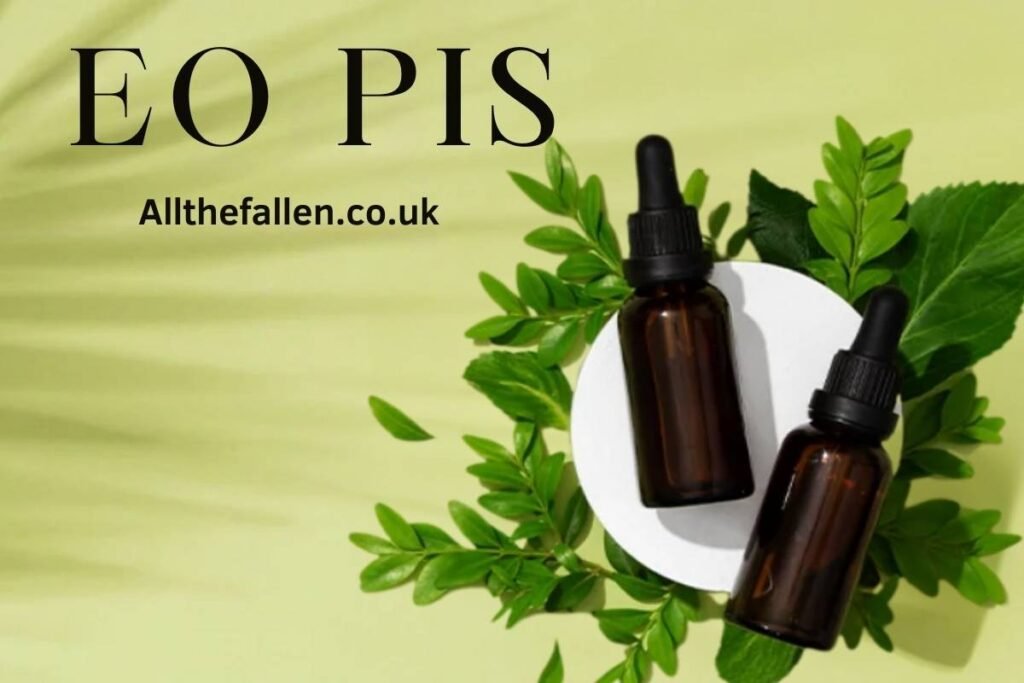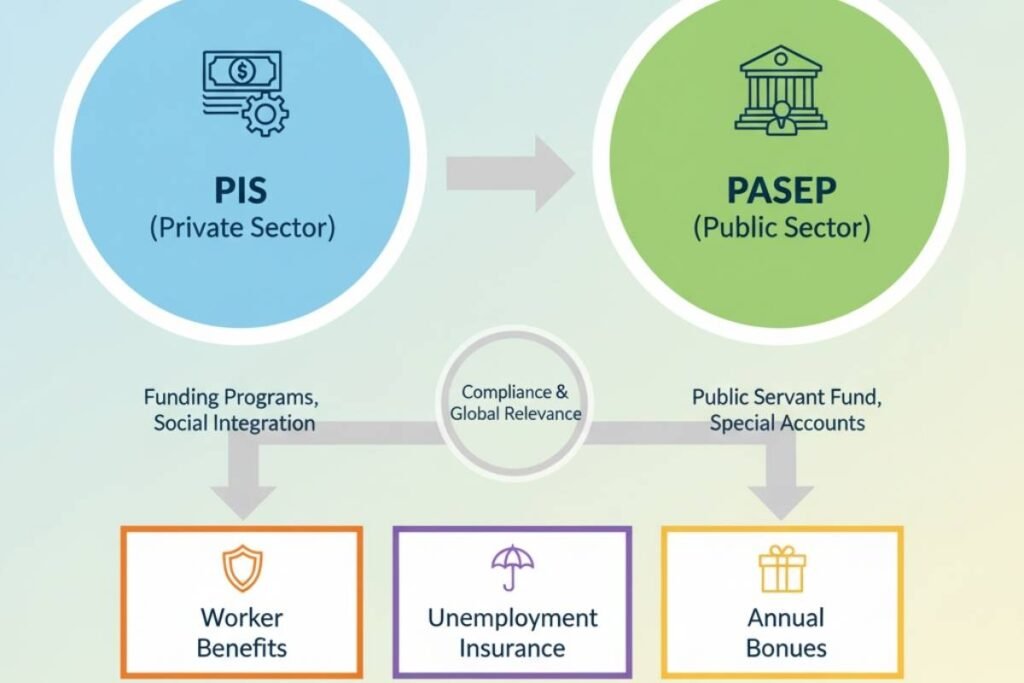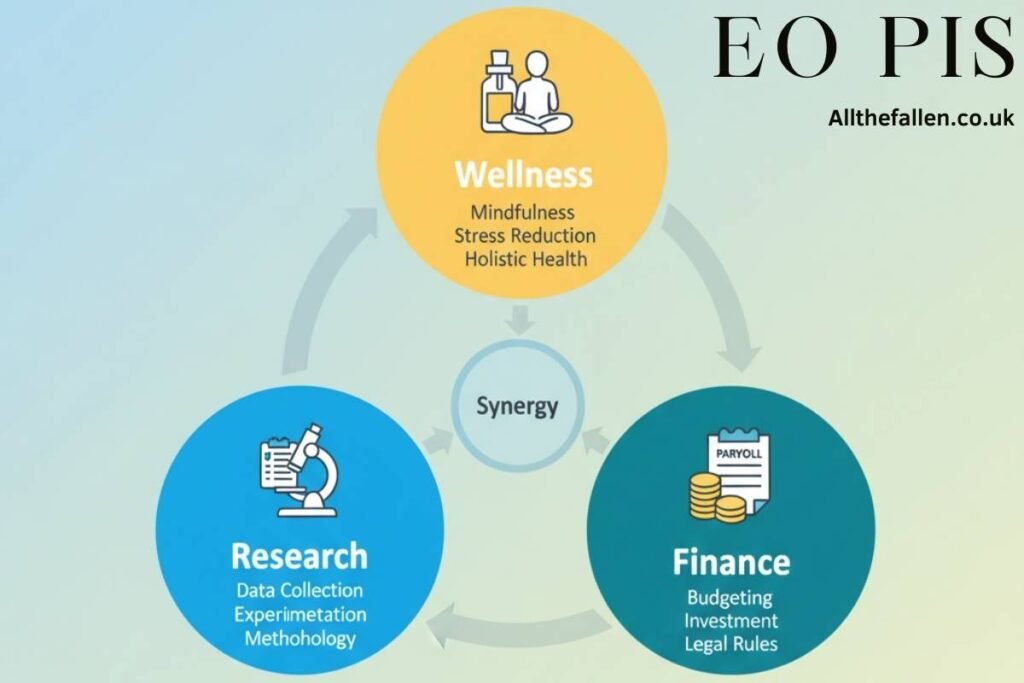The world of acronyms can feel like a maze especially when one phrase appears in totally different places. Eo pis is a prime example. At first glance it might look like a random code or a puzzle that only insiders can solve.
But the reality is that this acronym shows up in research policies wellness discussions and financial systems each with a distinct role. The goal here is not to overwhelm but to unpack these meanings in a way that anyone can follow.
By the end readers will have a clear sense of where this acronym fits without the confusion that usually surrounds it. This article is proudly presented by Allthefallen bringing you clear and trusted insights on Eo pis.
What is Eo pis?

Eo pis is an acronym that appears in very different contexts which is why it often causes confusion. In research it can point to executive orders that shape how Principal Investigators manage grants and compliance.
In wellness it can mean essential oils used for relaxation focus or stress relief. In finance it links to Brazil payroll programs known as PIS and PASEP.
The key is that the meaning depends entirely on the setting where it is used. Without context the term can feel like a puzzle but clarity comes once the field is identified.
Why Does Eo pis Matter?
Understanding it is important because the acronym is tied to real responsibilities and choices across different fields. For researchers it can mean following strict policies that shape funding and data use.
For professionals seeking balance it relates to tools that may ease stress during demanding work. For employers it connects directly to compliance with payroll laws in Brazil.
In each case ignoring its meaning can create challenges. Knowing what Eo pis refers to in your context ensures clarity and prevents mistakes.
Executive Orders in Research Administration!
In research Executive Orders can directly affect the work of Principal Investigators. When policies shift at the national level they often filter into universities labs and funding agencies.
This means researchers must stay alert because what looks like a distant announcement can quickly become a rule for their grant management.
For example changes in data security or spending transparency may start from an executive desk and end up shaping daily routines in a lab.
The challenge is that these rules arrive as official language that is not always easy to translate. This is why staying connected with research offices is critical.
Compliance and Data Management!
One area shaped by these directives is data management. Open science movements and data sharing rules often stem from such mandates.
For researchers this translates into detailed plans for where how and when their data will be stored. It also means more documentation which can feel like an extra burden but is required for accountability.
Missing these Eo pis requirements is not a small matter but it can cause delays audits or even funding losses. Compliance is always essential here.
The principle is simple but science must remain transparent and accessible and that goal is pursued through strict data sharing obligations. For Principal Investigators compliance is non negotiable.
Financial Oversight in Grants!
Executive guidance often pushes for higher standards of financial responsibility in funded projects. Researchers are asked to justify costs down to the smallest expense from lab supplies to travel funds.
This is meant to prevent waste and misuse of public money. While the intent is accountability the process can feel like balancing on a tightrope with every decision scrutinized.
For those managing large projects the rules require detailed tracking and explanations at each step. The message is clear but the funding is a privilege tied to responsibility. Those who adapt well to this environment protect both their work and their credibility.
Security and International Collaboration!
Another focus area tied to these orders is research security. Institutions are asked to guard against risks like foreign influence or unauthorized sharing of sensitive information.
For labs with international collaborators this can create extra layers of review and approval. Sometimes a project that looks purely academic may raise questions if it involves certain technologies.
These Eo pis requirements may seem heavy but they reflect concerns about safeguarding vital national interests and the rules must evolve.
Principal Investigators must navigate this landscape carefully balancing openness in science with the need for compliance. Mistakes here are not only bureaucratic but can harm reputations.
Technology and Procurement Standards!
Directives can also shape what tools researchers are allowed to use. For instance requirements about cybersecurity or sourcing equipment from approved vendors influence decisions down to the purchase of everyday lab items.
This means a favorite Eo pis software or device may have to be replaced if it does not meet updated rules ensuring compliance and smooth operations.
Adjustments like these can be frustrating but are part of the broader compliance framework. The reasoning is about consistency and protection at scale.
By following these standards research institutions reduce risks and ensure they align with national policies. Adaptability becomes an essential skill for teams.
Essential Oils in the Research Environment!

Beyond policies the same acronym also links to a different world essential oils. These concentrated plant extracts have gained attention for their calming and energizing properties.
In high pressure settings like research labs stress is part of daily life and small tools for relief can be valuable. Scents such as lavender peppermint or citrus are often used to create moments of calm or focus.
While science continues to test their exact effects many people find the act of pausing and breathing deeply to be restorative. In this sense the role of oils becomes part wellness and part ritual.
Stress and Mental Clarity!
The pressure of deadlines funding cycles and reviews can make a researcher life overwhelming. Essential oils are often viewed as one tool in managing this stress.
The idea is not that a single Eo pis scent provides a cure but that it creates a space for pause. Oils like lavender are linked with relaxation while peppermint or rosemary are said to improve focus.
For some the comfort lies in the routine itself. Taking time for intentional breathing with a familiar aroma helps mark a boundary between chaos and calm. These small breaks support balance in demanding environments.
Mood and Emotional Support!
Aromas are deeply tied to human emotions and this is why essential oils appeal to many professionals. Bright scents such as orange or grapefruit can lift spirits during challenging days.
Calming scents like chamomile can ease tension after hours of work. The use of oils in this way is less about proven science and more about personal experience.
Researchers like anyone else benefit from practices that restore energy. Even in a setting driven by logic and evidence the human side cannot be ignored. Emotional support even from something simple matters in maintaining well being.
Research Into Essential Oils!
Essential oils are not only wellness tools but also topics of study themselves. Researchers in fields like pharmacology chemistry and psychology examine their properties and potential.
Some studies explore antimicrobial effects while others look at impacts on mood or stress. This area is complex and results vary but it continues to attract serious investigation.
For Principal Investigators this means oils are both a personal option and a professional subject. Their role sits at the crossroads of science and everyday wellness. This makes them an unusual but relevant part of the broader conversation about Eo pis.
Safety and Best Practices!
Despite their popularity essential oils require care in use. Applying them directly to the skin can cause reactions so dilution with carrier oils is important.
Diffusing scents in shared spaces requires consideration for others who may be sensitive. Choosing quality sources is also key since purity and labeling can vary.
For anyone incorporating oils into daily routines these practices help ensure safety. The goal is not to create new problems but to enhance well being in a responsible way. When handled with care essential oils can be a supportive addition to a busy professional life.
Brazil Payroll Contributions: PIS and PASEP!

In finance the term connects to something very different but the payroll contributions in Brazil. Known as PIS for private companies and PASEP for public entities these programs provide social benefits for workers.
Employers contribute based on salaries and the funds support unemployment insurance and annual bonuses. For institutions working with Brazilian staff this is a critical part of compliance.
Ignoring it can result in penalties or unhappy employees missing expected benefits. It may seem distant from research or wellness but for global operations understanding these rules is vital. This financial angle is another dimension of Eo pis.
Employer Responsibilities in Brazil!
Companies operating in Brazil must account for PIS or PASEP when managing payroll. For private sector staff contributions are mandatory while public institutions contribute under a separate program.
These rules form part of the financial structure that ensures support for workers. Employers who fail to comply risk fines and strained relationships with staff.
For international collaborations clarity on these obligations helps avoid confusion. This is not an optional cost but a built in requirement of doing business in Brazil. For Principal Investigators handling grants abroad awareness of this responsibility is non negotiable.
Impact on International Research!
Research is often global with teams and funding spread across borders. When projects involve Brazil payroll obligations become part of the picture.
A U.S. university collaborating with a Brazilian lab for instance must navigate these systems correctly. While institutions usually manage the details knowing the basics helps researchers avoid missteps.
Contributions like PIS or PASEP are part of the broader employment landscape. Overlooking them can create financial gaps that harm both staff and projects.
Clear communication and proper Eo pis budgeting keep international research on track. For leaders this awareness builds trust across teams.
Practical Awareness for Professionals!
The lesson from these financial rules is that context always matters. An acronym can mean very different things depending on where and how it appears.
For those working across countries acronyms like PIS carry legal and financial weight. They affect staff budgets and compliance in tangible ways.
The same applies to researchers where a single term can tie back to major policies. The safe approach is always to ask questions and clarify meanings before making decisions.
In professional settings assumptions are risky. Clear understanding prevents errors and supports smooth operations at every level.
Understanding Eo pis at a Glance!
While detailed explanations help sometimes the fastest way to make sense of Eo pis is through a clear overview. Because this acronym connects to three very different areas a direct comparison of its settings can save readers from confusion.
A simple glance shows whether it is tied to research policies wellness practices or financial systems. Each carries different responsibilities and consequences for the people involved.
By laying out these contexts side by side the picture becomes far easier to read. The table below offers that quick clarity in one place.
| Context of Eo pis | Main Focus | Who It Affects | Importance |
| Research & Policy | Executive orders shaping compliance data and funding rules | Principal Investigators universities research administrators | High affects funding rules and daily operations |
| Wellness & Lifestyle | Essential oils used for stress relief focus and emotional balance | Researchers professionals wellness users | Medium helps with stress management not compliance |
| Finance & Payroll | Brazil PIS/PASEP programs linked to employer contributions | Employers international research projects HR teams | Critical legal requirement with financial consequences |
Key Takeaways About Eo pis!

The meaning of Eo pis changes depending on whether it appears in research wellness or finance. Each setting demands attention to detail because the consequences of misunderstanding can be serious.
Researchers risk compliance issues professionals may overlook useful wellness tools and employers could face legal penalties.
The lesson is to never assume one fixed definition without checking the context. Clarity saves time protects resources and reduces stress across different fields. By treating the acronym with care professionals remain prepared for whatever setting it appears in.
Conclusion
The phrase Eo pis does not point to one single answer but to several distinct areas of life and work. In research it signals executive orders that directly shape compliance and practice.
In wellness it connects to the use of essential oils as small but meaningful tools for balance. In finance it ties to payroll obligations that support Brazilian workers and collaborations.
Each setting demands awareness and care because the meaning changes with the context. What remains consistent is the importance of clarity. By recognizing which world the acronym belongs to professionals can move forward with confidence.
FAQs
What does Eo pis usually mean in research?
It often refers to executive orders that shape rules for Principal Investigators.
Can essential oils really help with stress?
They may provide relief through scent and mindful breathing, though effects vary.
Why is PIS important in Brazil?
It is a payroll contribution that funds worker benefits like insurance and bonuses.
Do employers outside Brazil need to pay PIS?
Only if they employ staff directly in Brazil but otherwise it may not apply.
Are essential oils safe for daily use?
Yes if diluted properly and sourced from reputable suppliers.




